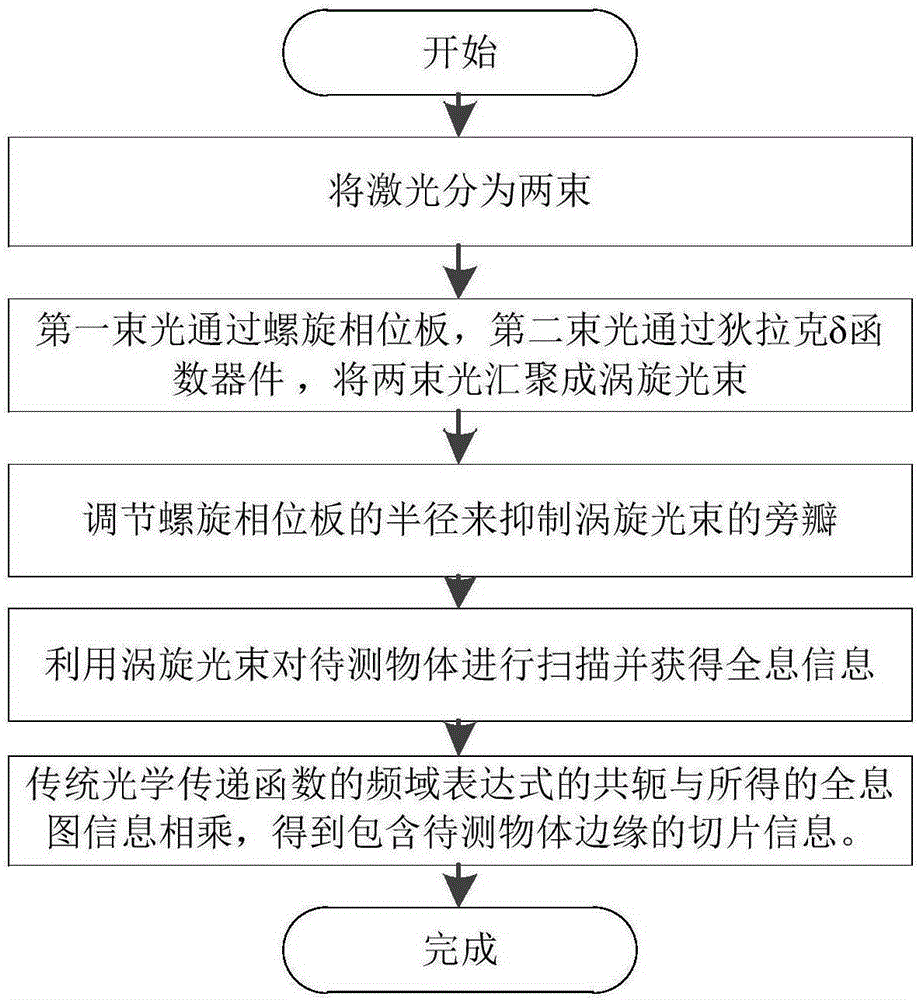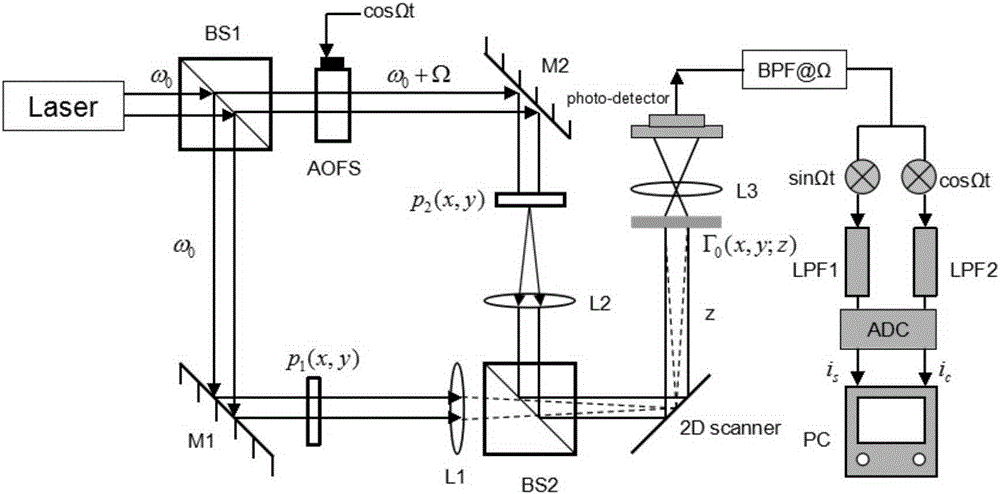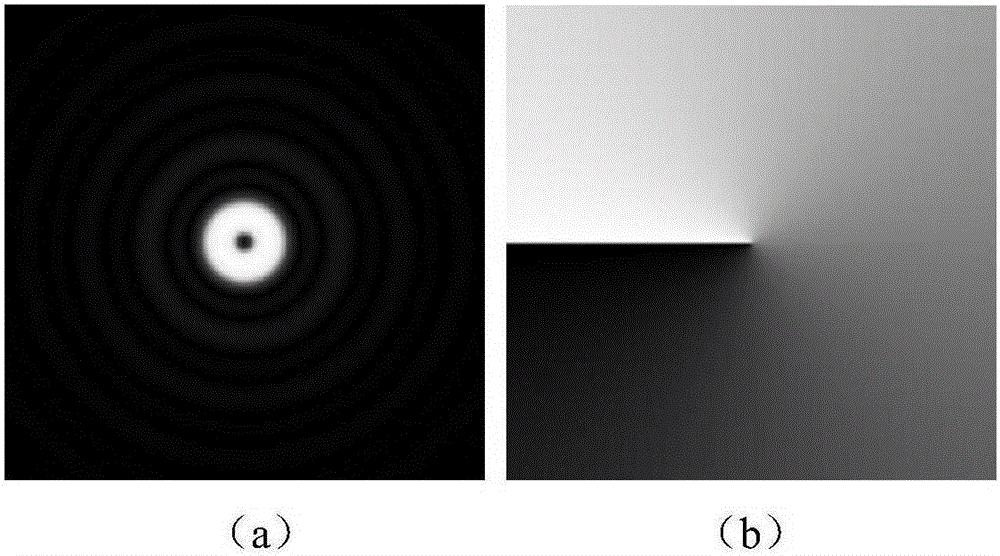Gaussian apodization based optical scanning holographic edge detection method
A technology of optical scanning and edge detection, which is applied in the field of optical scanning holography, can solve the problems that diffraction noise is not filtered out and the suppression ratio is not high
- Summary
- Abstract
- Description
- Claims
- Application Information
AI Technical Summary
Problems solved by technology
Method used
Image
Examples
Embodiment
[0060] The process of the embodiment of the present invention is as follows figure 1 As shown, the basic structure adopted is as follows figure 2 As shown, the wavelength λ=632.8nm of the He-Ne laser Laser, its output is a Gaussian beam, the beam waist ω s = 3mm, the focal length of the two convex lenses (L1, L2) is 400mm, and the spiral phase plate is realized by a liquid crystal spatial light modulator with 1024×768 pixels (each pixel is 14 μm). image 3 As shown, the size is 1mm×1mm, the matrix size is 256×256, and its axial position z=100mm, the scanning process can be realized according to the following steps:
[0061] Step 1. Forming the Vortex Beam
[0062] like figure 2 As shown, the light with angular frequency ω emitted by the same light source is split into two beams by the first polarizing beam splitter BS1, one of which passes through the first pupil p 1 (x, y) form a vortex light; another beam passes through the second pupil p after the frequency shift of Ω...
PUM
 Login to View More
Login to View More Abstract
Description
Claims
Application Information
 Login to View More
Login to View More - R&D
- Intellectual Property
- Life Sciences
- Materials
- Tech Scout
- Unparalleled Data Quality
- Higher Quality Content
- 60% Fewer Hallucinations
Browse by: Latest US Patents, China's latest patents, Technical Efficacy Thesaurus, Application Domain, Technology Topic, Popular Technical Reports.
© 2025 PatSnap. All rights reserved.Legal|Privacy policy|Modern Slavery Act Transparency Statement|Sitemap|About US| Contact US: help@patsnap.com



